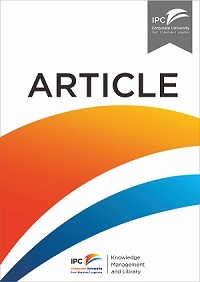Article
A two-stage supply chain DEA model for measuring container-terminal efficiency
Despite the growing amount of research into container-port operations and efficiency, much of the literature on the subject treats container ports and terminals as black box systems without examining the structure of their transformation and production processes. Research on the network and multi-stage structure of container-terminal operating systems is scarce and its applications in the context of port performance and benchmarking are even scarcer. In this paper, we argue that the container terminal production would be best modelled as a network of interrelated sub-processes and operating sites and develop a supply chain DEA model aimed at capturing the transformational process within the container-terminal system and across its sub-systems. We start by modelling container terminal operations as a container-flow process and analyse their site-specific and combined efficiency before formalising a two-stage supply chain DEA model to measure the efficiencies of both individual and network container terminal operations. Although, due to the unavailability of detailed operational data, this study is limited to container export flows only, the results provide further insight on the network structure of container-terminal operating systems and confirm the existence of disproportionate performances and efficiency levels between container-terminal operating sites and sub-processes.
Ketersediaan
Informasi Detail
- Judul Seri
-
Int. J. Shipping and Transport Logistics
- No. Panggil
-
ATC LO BIC a c.1
- Penerbit
- Korean : ., 2011
- Deskripsi Fisik
-
1 p.
- Bahasa
-
English
- ISBN/ISSN
-
-
- Klasifikasi
-
LO
- Tipe Isi
-
-
- Tipe Media
-
-
- Tipe Pembawa
-
online resource
- Edisi
-
Vol. 3, No. 1, 2011
- Subjek
- Info Detail Spesifik
-
-
- Pernyataan Tanggungjawab
-
Khalid Bichou
Versi lain/terkait
| Judul | Edisi | Bahasa |
|---|---|---|
| Managing Incompetence : An Innovative Approach for Dealing with People | en | |
| The essentials : an introduction to the most enduring ideas on management from Harvard business Review | en |
Lampiran Berkas
Komentar
Anda harus masuk sebelum memberikan komentar

 Karya Umum
Karya Umum  Filsafat
Filsafat  Agama
Agama  Ilmu-ilmu Sosial
Ilmu-ilmu Sosial  Bahasa
Bahasa  Ilmu-ilmu Murni
Ilmu-ilmu Murni  Ilmu-ilmu Terapan
Ilmu-ilmu Terapan  Kesenian, Hiburan, dan Olahraga
Kesenian, Hiburan, dan Olahraga  Kesusastraan
Kesusastraan  Geografi dan Sejarah
Geografi dan Sejarah